LASER FRECKLE REMOVAL
Freckles are extra patches of pigment under your skin, in most cases they are harmless. They are created because of overproduction of melanin. Freckles are a build-up of melanin on your skin’s outer layer. They come from ultraviolet (UV) radiation stimulation. Freckles often show up during childhood and can continue until the 20’s. People with fair skin or red hair usually have them. At Laser Skin Clinic, we offer freckles removal using laser.
There are two type of freckles, ephelides and solar lentigines.
Ephelides are genetic and first show up around 2 to 3 years old, usually after sun exposure. They can go away as you age and tend to fade during winter or by avoiding direct sunlight.
Solar lentigines, often called age spots, sunspots, or liver spots. They show up as you get older and are common in people in their 50’s or older. They don’t disappear and show up because of sun exposure and aging.
What are Freckles and Freckles Removing using Laser?
Freckles are small brown spots on your skin that appear in sun-exposed areas. Freckles are generally not harmful. They form because of excessive melanin production, which is responsible for skin and hair color (pigmentation). Freckles are caused by ultraviolet (UV) radiation stimulation.
Freckles are classified into two types: ephelides and solar lentigines. Ephelides are the most common type of freckle that people think of. Solar lentigines are dark patches of skin that form in adults. Freckles, aging spots, and sunspots are examples of this. The appearance of the two types of freckles may be similar, but they differ in other ways, such as their development.
What are freckles?
Ephelides:Sun exposure and sunburns cause these freckles to appear. They can appear on anyone who does not use UV protection. They are visible on your face, back of your hands, and upper body. This type of freckle is more common in people with lighter skin tones and hair color. Ephelides are more common in Caucasian and Asian people.
Solar lentigines:this freckle is similar to ephelides but are more common in Caucasians and adults over the age of 40.
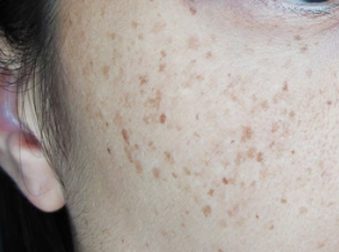
What increases your chance of having freckles?
Freckles can be attributed to both the natural environment and genetics. Freckles can be exacerbated by your exposure to sunburns. Frequent sunburns and a gene called MC1R, which provides instructions for generating melanin, were both found to predict the prevalence of freckles in a study of 522 middle-aged French women. However, the gene does not affect everyone in the same manner. Pheomelanin and eumelanin are two types of melanin.
People with pheomelanin-producing skin are not protected from UV radiation and are more likely to have:
- light skin
- freckles
- skin that tans poorly
- red or blonde hair
People with more eumelanin are more protected from skin damage by UV and have:
- darker skin
- brown or black hair
- skin that tans easily
Solar lentigines
The French study also discovered that various factors enhanced the likelihood of solar lentigines,including; sun exposure, history of freckles, hormone medication such as oral birth control.
Book Your Free Consultation Today Or Call (647) 560-9233
Laser Freckle Removal Treatment
Laser treatment targets damaged skin with pulses of concentrated strong light. Lasers come in a variety of shapes and sizes. The 1064 Q-Switched Nd YAG laser is effective for treating freckles, according to a 2015 study. According to the findings, this laser treatment lightened more than 50% of freckles in 62% of patients.
Laser therapy is generally considered safe. Scarring is unlikely to occur.Other side effects,however, may occur, including:
- swelling
- itching
- redness
- crustiness
- infection
- changes in skin
- color
- peeling
Freckles Removing Treatment Toronto & Richmond Hill
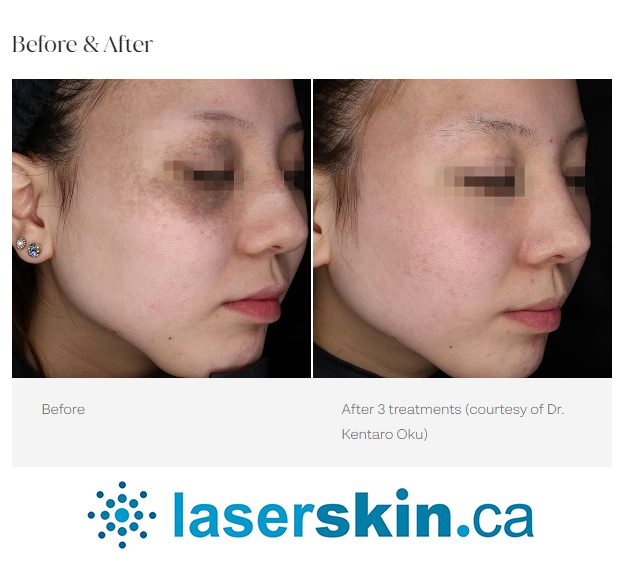

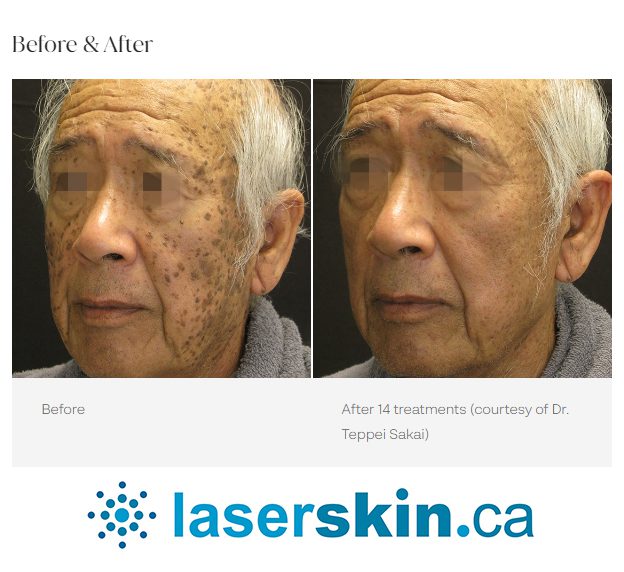
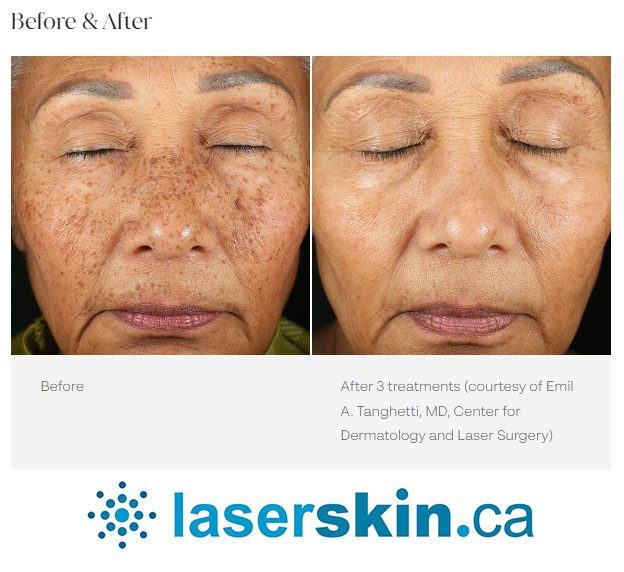
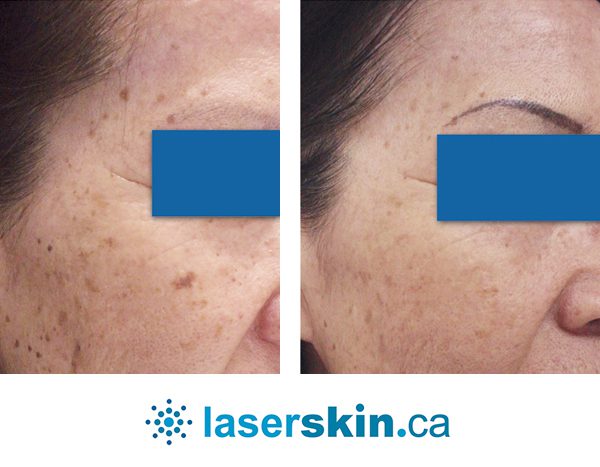
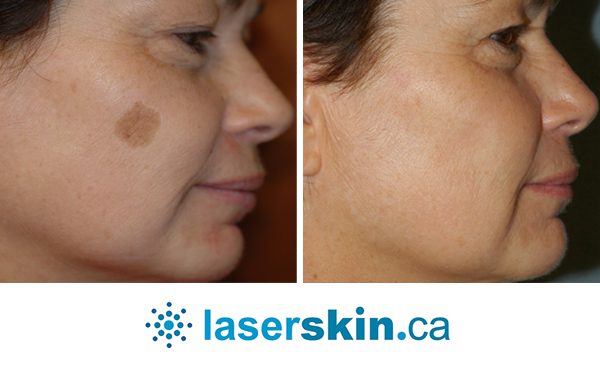
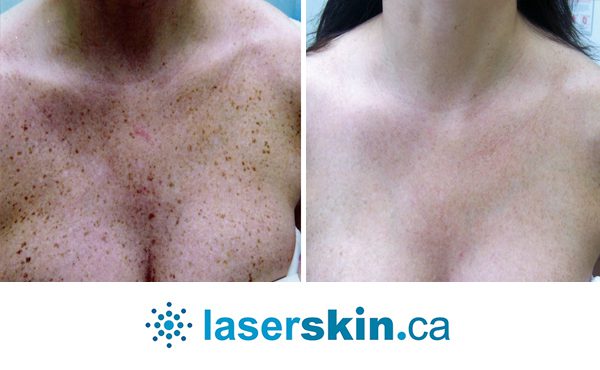
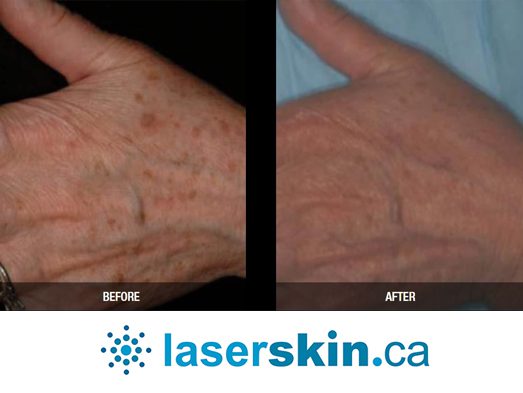
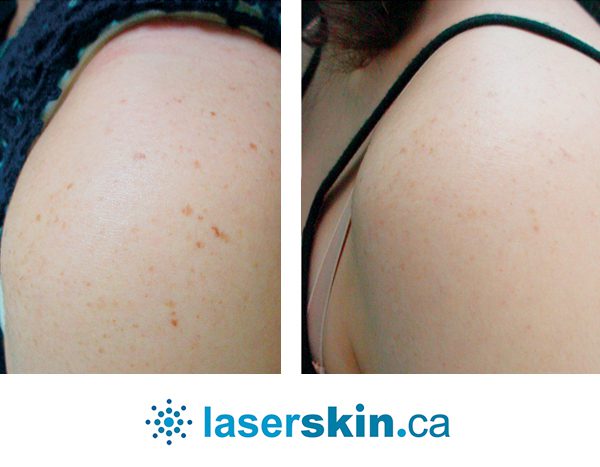
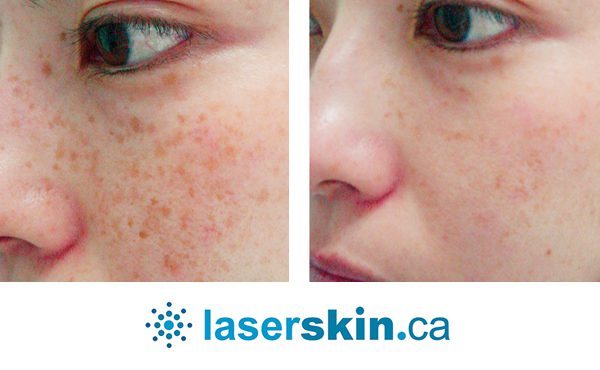
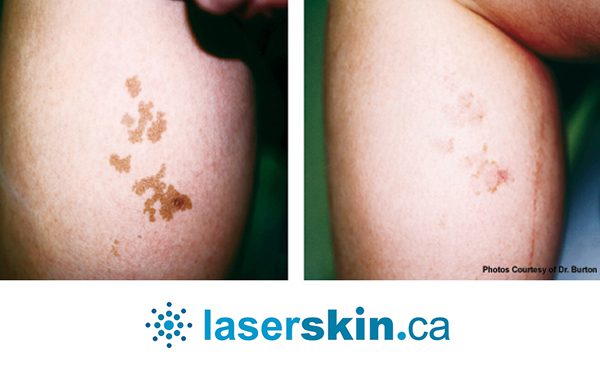
Q&A For Laser Freckle Removal
How do freckles form?
Freckles are tiny, flat, and typically circular spots on the skin caused by an accumulation of melanin, the pigment that gives the skin its colour. They occur most frequently on the face, neck, arms, and shoulders, and are more evident on individuals with fair skin.
Why do freckles form?
A combination of genetic and environmental factors produce freckles. Sunlight exposure causes the epidermis to produce melanin, resulting in the formation of freckles. Because their skin contains less melanin, people with fair complexion, red or blonde hair, and blue or green eyes are more likely to develop freckles. Freckles can also be caused by hormonal fluctuations, such as those experienced during pregnancy.
Are freckles dangerous?
Freckles are typically innocuous and do not necessitate medical care. However, they can be an early indicator of sun-induced skin injury. Freckled individuals may have an increased risk of developing skin cancer, particularly if the disease runs in their family.
Can freckles be eliminated by laser?
Yes, freckles can be eliminated through laser therapy. Laser treatment is a safe and effective method for removing freckles without harming the adjacent skin.
How does freckle laser treatment work?
Utilizing a high-intensity light beam, laser treatment for freckles targets the melanin pigment in the epidermis. Melanin absorbs light energy, causing it to disintegrate into smaller particles that are progressively eliminated by the body’s natural processes. The outcome is a reduction in the appearance of freckles and an enhancement in the tone and texture of the skin as a whole.
What kinds of lasers are utilized for freckle removal?
Q-switched Nd:YAG, Alexandrite, and Pulsed Dye lasers are the most commonly used lasers for freckle removal. The most effective lasers for removing freckles are Q-switched Nd:YAG lasers, which can penetrate deeply into the epidermis and break down the melanin pigment. In addition to being effective, Alexandrite lasers are better adapted for lighter skin tones. Pulsed Dye lasers are less effective than Q-switched lasers, but they are an excellent choice for patients with sensitive skin.
How many laser treatments are necessary for blemish removal?
The number of laser treatments necessary to eradicate freckles is dependent on the freckles’ size, location, and depth. Typically, optimal results require between one and three interventions. However, additional remedies may be necessary for some individuals, particularly those with a large number of freckles or intense pigmentation.
How long is the recuperation period following laser treatment for freckles?
After laser treatment for freckles, recovery time is minimal. Immediately after the procedure, patients may experience redness, swelling, and moderate discomfort, but these symptoms typically subside within a few days. During the healing process, it is essential to avoid direct sunlight and use a sunscreen with a high SPF to safeguard the skin.
Are there any hazards or adverse effects associated with freckle laser treatment?
Minimal hazards and adverse effects are associated with laser treatment for freckles. There is however a small chance of scarring, skin discoloration, or infection. To minimize these risks, it is vital to select a qualified and experienced laser technician.
How can I prevent the formation of warts after laser treatment?
After laser treatment, it is essential to limit sun exposure and use a sunscreen with a high SPF to prevent the formation of freckles. Additionally, wearing a hat and protective apparel can prevent the development of new freckles. It is advised to avoid solar exposure between 10 am and 4 pm, when the sun’s rays are at their strongest. If you must be outside during these hours, seek shade and don protective clothing. Using a daily moisturizer with SPF can also help protect the skin and prevent the development of new freckles. It is essential to adhere to a consistent hygiene regimen and avoid harsh products that may irritate the skin. Consult a dermatologist or skin care specialist if you have any concerns or queries regarding the prevention of new freckle formation.

